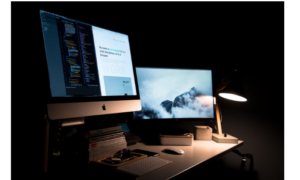In the dynamic realm of product development, staying relevant means more than having a brilliant concept. Designs that once captured attention can swiftly lose their appeal amid the constant shifts in trends, user expectations, and technological advancements. This is where the concept of adaptability in design comes into play—it’s not just about being flexible; it’s about proactively engaging with change.
Imagine creating a product that seems flawless in its design, only to find it struggling to resonate with users a few months down the line. That’s the challenge of today’s fast-paced market. User preferences evolve, new technologies emerge, and trends come and go in the blink of an eye. This is where adaptability becomes crucial—designs need to be able to pivot, adjust, and stay relevant in the face of such rapid changes.
Embracing Feedback: A Key Component of Adaptability
As a UX design consultant, I’ve witnessed firsthand how adaptability serves as the cornerstone of successful product development. It’s not merely a trait reserved for specific stages of the design process but rather a mindset that permeates the entire journey, from conception to launch and beyond.
One of the key aspects of adaptability in design is embracing feedback. User feedback, market research, and technological advancements all contribute to the iterative nature of design. Being open to receiving feedback, whether positive or constructive criticism, is crucial. It allows designers to refine their work, making it more attuned to the evolving needs and desires of the users.
Adapting to Technological Shifts
In today’s tech-driven world, change is the only constant. Every day brings new tools, platforms, and devices, reshaping how people engage with products. For designers, this means a continuous learning curve. It’s not just about keeping up; it’s about staying one step ahead. They must anticipate how users will interact with their creations in a landscape that’s always evolving. From tweaking designs to fit various screen sizes to integrating fresh interaction styles, adaptability becomes the secret sauce that keeps the user experience smooth and consistent, no matter where or how someone accesses the product.
Proactive Adaptation: Anticipating Change
Adaptability also thrives in the realm of anticipation. While designers can’t foresee the future, they possess a powerful tool: insight. Through meticulous research and analysis, they decipher emerging trends and shifting user behaviors. Armed with this knowledge, they don’t just react; they anticipate. They infuse their designs with a proactive flexibility, a built-in responsiveness to what might come next. By staying ahead of the curve, they create designs that stand strong against the winds of change, ensuring they’re not just relevant today, but adaptable enough to weather tomorrow’s shifts.
Agile Methodologies: Embracing Iterative Adaptation
Moreover, the rise of agile methodologies has reshaped product development by prioritizing adaptability. Agile isn’t just a process; it’s a mindset that embraces change as an opportunity rather than an obstacle. Its iterative approach means constant refinement, where each cycle is a chance for improvement. Real-time feedback becomes the guiding light, steering the direction of the product toward meeting the ever-evolving needs of users. Agile isn’t about reaching a final destination; it’s about continuously shaping a product that’s in tune with the dynamic landscape of user expectations.
Finding Balance: Evolution Without Compromise
Adaptability in design is a delicate balance, not a constant overhaul. It’s about discerning what functions effectively and preserving it while simultaneously identifying areas for enhancement. This equilibrium maintains a sense of continuity, anchoring the product in its successful elements, while also fostering innovation. It’s not a choice between sticking rigidly to the old or always chasing the new; rather, it’s a harmonious blend—a bridge between familiarity and innovation that ensures a product evolves without losing its essence.
In conclusion, adaptability in design is not just a desirable trait; it’s a fundamental principle that drives successful product development. As a UX design consultant, I’ve seen how embracing adaptability allows for more resilient, user-centric designs that stand the test of time. By remaining open to change, responsive to feedback, and proactive in anticipating shifts, designers can create products that not only meet current expectations but also adapt seamlessly to the ever-changing landscape of user needs and technological advancements.
Remember, in the realm of design, adaptability isn’t a compromise; it’s a competitive advantage.



































